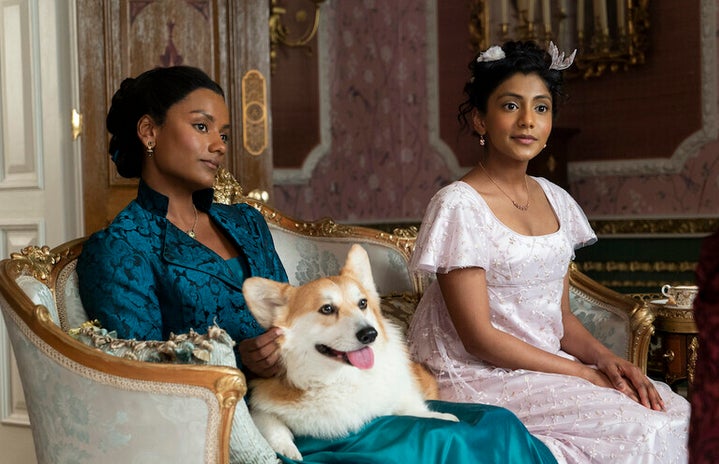I cannot stop thinking about the second season of Netflix’s hit show, Bridgerton. More importantly, I can’t stop thinking about the brilliant women of color who were at the forefront of the show this time around and how their presence redefines the world of period dramas. With South Asian actresses Simone Ashley as the female lead and Charithra Chandran as the supporting act in the second season of Bridgerton, women of color are claiming a place in the illustrious world of period dramas.
Although mainly correlated with the Regency and Victorian eras, period dramas refer to media projects that take place in historical periods. Despite Bridgerton arguably being the most popular period piece that features people of color in prominent roles, it is not the first of its kind. The first actor to take on traditionally white roles in plays was British actor Ira Frederick Aldridge. Born in 1807, Aldridge was a highly successful Shakespearean actor who performed from the 1820s to the 1860s. Pre-Bridgerton, films such as The Personal History of David Copperfield and Broadway plays like Hamilton also placed actors of color at the forefront of historical narratives. Bridgerton itself was not Shonda Rhimes’ first foray into the period drama genre– the short-lived ABC show Still Star-Crossed sported a cast of mainly people of color and followed the aftermath of Shakespeare’s Romeo and Juliet.
Although many actors of color have been celebrated for their performances in period dramas, they are not free of critiques regarding historical accuracy. When talking about period dramas, historical accuracy has been a topic of debate and its relevance in media has been argued for and against. In recent years, however, many period dramas have shifted their focus from historical accuracy to diversity and inclusivity. British-Chinese Actress Gemma Chan was criticized for her portrayal as Bess of Hardwick, an advisor to Queen Elizabeth I in the film Mary, Queen of Scots. In an article with Allure, Chan said:
“Why are actors of color, who have fewer opportunities anyway, only allowed to play their own race? And sometimes they’re not even allowed to play their own race… If John Wayne can play Genghis Khan, I can play Bess of Hardwick” (Chan 2019).
Mary, Queen of Scots was not Gemma Chan’s first venture into the world of period dramas. In 2019, she starred in Refinery29’s short film, Mr. Malcolm’s List opposite British-Nigerian actor Sope Dirisu and Indian actress Freida Pinto. Set to become a feature film released later in 2022, Pinto and Dirisu will reprise their roles opposite Zawe Ashton, a British actress of Ugandan descent, who will play Chan’s role from the short film.
At the end of the day, period pieces are forms of entertainment. Entertainment can be achieved in many different modes and forms and thus should not be subjected to the conformities of white normalcy that has been prevalent in media for centuries. While historical accuracy is important in terms of referring to media for research and related purposes, that does not mean that entertainment should play by the same rules. It’s time to usher in a new era of period dramas, this time starring people of color in leading roles. Finally, viewers of color can feel represented in period dramas, just as white viewers were for decades.


